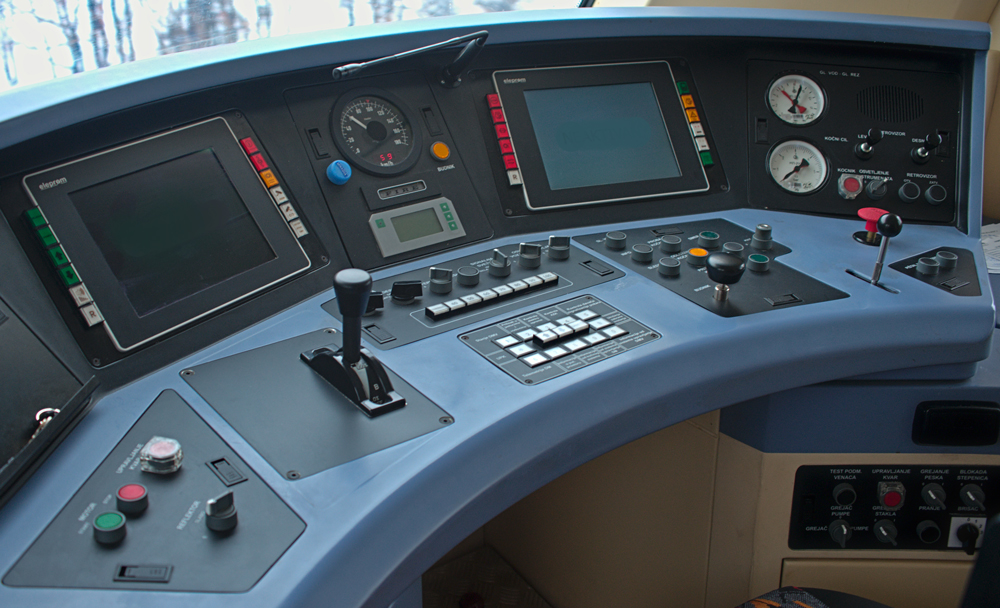In the transportation sector, particularly in modes of railways, maritime traffic, and aviation, remote sensing and interface controls have been rapidly evolving. Not only do some legacy electric detection and signal systems endure, but new layers of complexity is growing on top of these networks due to Internet of Things (IoT) sensors and data collection.
This post examines the electronic devices at the edge which are fast becoming the new infrastructure in these networks. And we’ll take a look at some of the best practices product designers in the transportation space are following to ensure long-term reliability in these settings.

Expansion at the Edge
In the past, electronic controls for transportation networks might have consisted of simple rugged boxes, with heavy-duty buttons and prominent bulbs for indicators. Older control panels might not communicate more than a few data points.
In recent years, managers have begun to capture a higher variety of data, expanding metrics to include the volume and condition of cargo, for instance, or real-time assessment of environmental conditions.
Much of this new data has been generated through IoT sensors and other wireless edge devices. Here are some examples of recent developments:
A tank car might have vibration, temperature, and brake sensors, electronic gauges of tank pressure, and lock monitors for openings all routed through a communications gateway.
Inspection systems use lasers and cameras mounted onto locomotives or railcars to analyze track as the train travels across the network. Other networks of IoT devices track and monitor equipment performance and environmental conditions.
In the maritime industry, IoT devices have been deployed in engine rooms to boost efficiency, reduce maintenance costs, and prevent breakdowns. Other sensors monitor remote shipboard equipment in real time to identify repair issues and alert crew to potential failures.
The vessel itself is tracked by onboard devices, transmitting to port facilities onshore on its location, speed, and fuel consumption. The parcels within its cargo hold are tracked as well, providing couriers with real-time shipment updates.
Like rail and marine applications, engines and other critical equipment in aviation are monitored by IoT sensors. Airlines might have the most diversity of data collection schemes, ranging from baggage tracking to capturing passenger biometrics to monitoring cabin air quality. The status of all essential functions on flights is now communicated to the ground in real time.
Two Levels of Interfaces
Two levels of interfaces are developing from data expansion across these working networks: at the edge and in the cloud.
Command and control centers enjoy an aggregation of operational data on the cloud, typically viewable on programmable dashboards on computer monitors or mobile tablets.
The edge devices also need to convey important information to inspectors and maintenance personnel on the ground. For this level of user interface (UI), LEDs have become the universal default language between electronics and employees. Like the older control panels, physical IoT devices typically need to communicate only a few essential data points.
For nearly any sensor network, the UI would likely answer a few basic questions at a glance:
- • Is the device powered?
- • Does the device have a connection?
- • Is the device sending data?
- • Based on what the sensor is measuring, is there reason for alarm?
LEDs have become the standard in electronics to show these singular data points to users on the ground mainly because they have better longevity and durability, unlike the incandescent indicators of old.
For the potential harsh conditions of transportation networks, however, additional components have become part of best practices in the design of LED indicators of lasting and dependable quality.
Edge devices for transportation organizations need to have the most rugged construction to deal with changes in temperature, moisture egress from rain and snow, and constant vibration. Additionally, vital data indicators need to be legible from afar, at different viewing angles, and through low-visibility conditions.
Light pipes in conjunction with LEDs comprise the best method to ruggedize user interfaces at the edge and to ensure bright legibility throughout the lifetime of the sensor, router, or transmitter.
Rather than building a board-mounted LED positioned at the indicator window, light pipes are rigid or flexible reflective tubing that allows light to travel a distance from the circuit board without loss of intensity.
How do light pipes enhance performance of edge devices in transportation?
- Brightness and visibility: Light pipes conserve light and keep it separated from other LED sources inside a device to prevent light interference. Lenses at the point of interface allow lights to protrude into a dome shape, allowing viewing from multiple vantage points.
- Liquid ingress prevention: Light pipes with lenses are often IP-rated against water and dust ingress, making seals that are dependably weatherproof.
- Stabilization: Secure attachment of light pipes to LEDs and the UI prevent vibrations or shocks from jarring the light source away from the indicator opening.
- Design flexibility: Light pipe design methods allow for consolidation of LEDs on a board, freeing up room for other components. Flexible piping gives designers more possible placements of indicators on the outside of a device.
Bivar is the original developer of ZeroLightBleed™ technology as well as innovative modular light pipe systems that make custom interface specifications easier and far less costly for product developers.
The design of user interfaces for control panels in the transportation sector has evolved significantly due to IoT and connected technologies. This has resulted not only in a finer mesh of data collection on essential operations, but also a multiplication of edge devices throughout the infrastructure of the network. As this expansion advances further, LEDs, lenses, and light pipes are becoming a standard method in IoT devices as well as traditional control panels.
Can light pipe technology be customized for your product design? Contact Bivar experts to learn more.
